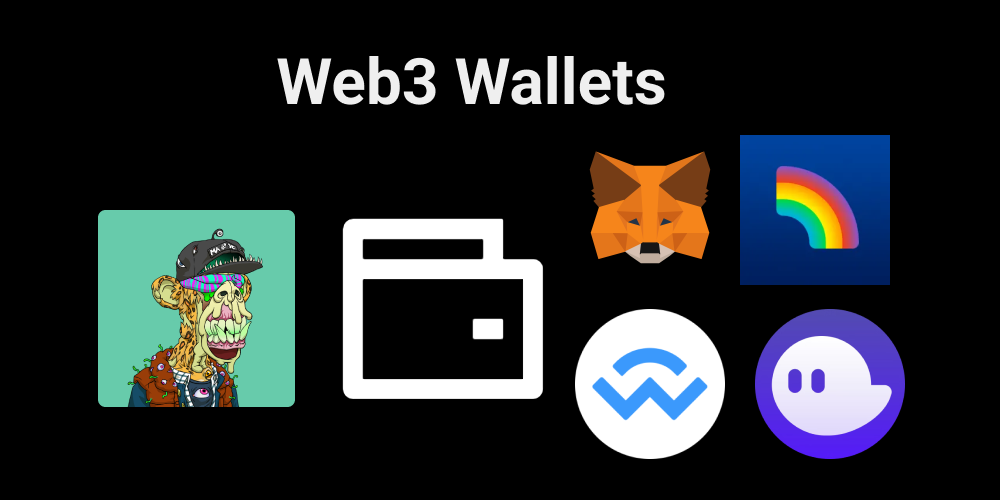Web3 Products: Wallets

Purpose
The purpose of this document is to describe the role of Web3 wallets to better understand and explain its importance in Web3.
Do your own research. Don't use funds you're not willing to lose. This is not financial advice.
Web3 Wallets: Why Do They Exist
Blockchain technology is fundamentally based on cryptography, public keys, and private keys along with concepts like sovereign individual ownership and decentralization. This requires there to be a user-owned tool for managing assets. Without self-custodial wallets (i.e. there's no centralized company that manages them), it would be impossible to have a decentralized internet or for users to have a direct relationship with Web3 applications and protocols.
Web3 Wallets: What Can They Do
A Web3 wallet (eventually just "wallet" like smartphone became "phone") is a gateway to using blockchain dapps and protocols. I call it that because it serves multiple purposes that don't have a Web2 "skeuomorphic" analogy:
Web3 Wallets
- Identity: Your public key address (which might be tied to an ENS address)
- Security: Your private keys and seed phrase that control access to the wallet and all of its assets
- Login: To become a user and engage with Web3 products (e.g. OpenSea, Compound), you must have a wallet
- App Permissions: In browser-extension or SSO style, you can control what a dapp can and can't access
- P2P Payments: You can send and receive payments from friends, for startup investments, with dapps, etc.
- Exchange: You can swap assets through Metamask Swap, Phantom's swap feature, etc. without a CEX/DEX
- Checking Account: You can let your assets sit idly in a Web3 wallet although this is often poor security practice
- Savings Account (Staking): You can stake your cryptoassets natively from some wallets to earn yield
- App Store: Increasingly you can discover new dapps to use directly from a wallet
- Browser or Operating System: Once you discover new apps, you can increasingly use them from the wallet
- NFT Gallery: You can view your own NFTs within some wallets on some platforms; this is still very early
- More: I am sure I missed some things.
There are 2 key takeaways that explain why it's hard to both understand and explain to people what a wallet is:
- A single product that does all of this in one place does not exist within Web2
- There is overlap with other dedicated Web3 products like a login protocol, AMMs, staking services, and more
In Web2, it might look something like this:
Various Web2 Products
- Identity: Your email address, IP address, your application-specific identity (e.g. Twitter username)
- Security: Your password and 2FA for various applications
- Login: Your unique email/username/password combination that likely varies per each application
- App Permissions: Browser extensions, in-app settings
- P2P Payments: Venmo, Zelle, Cash App
- Exchange: Robinhood or Fidelity for Stocks, Coinbase, Kraken, etc. for Crypto
- Checking Account: Bank of America, Wells Fargo, etc. or letting cash sit in your P2P payments app
- Savings Account (Staking): Same as the checking account providers; offers less than 1% APY
- App Store: Apple or Google
- Browser or Operating System: Chrome, Safari, Firefox, etc. or Mac OS / Windows / Linux / etc.
- NFT Gallery: Art that hangs on your wall, or paper-based ownership like a house deed in a bank safe
- More: I am sure I missed some things, and didn't accurately portray every comparison to Web2 perfectly.
Note that there is so much value flowing through wallets that it clearly won't require an ads-based / engagement optimization product and business model like Web2 does, which I'd argue has increased Internet addiction and social division.
Example Products
- Metamask
- Phantom
- Coinbase Wallet
- Argent
- Rainbow
- More
Many of these products require you to download a browser extension, and some are increasingly on iOS/Android. They each vary in the functionality they offer such as which blockchains they support (Ethereum, BSC, Solana, etc.) or the utility such as asset swapping or staking, which helps limit the number of different dapps users have to manage.
Web3 Wallets: What Could They Do
Eventually wallets could:
- Native Identity: Through integrating across multiple protocols and applications, you could use one wallet as your equivalent of a public key, ENS/Unstoppable Domain NFT, email address, etc.
- Wallet Aggregation: You could have a single wallet control multiple wallets across multiple blockchains.
- Messaging: You could send/receive messages from within the wallet application.
- Multi-Sig/Ownership: You could define rules through a smart contract or other means for who can access a wallet - so either shared group ownership, multi-sig for a single user to be able to make changes, and/or rules for changing control under certain conditions.
Next Steps
Do your own research. Don't use funds you're not willing to lose. This is not financial advice.
But if you're interested to learn more, try one of the wallets above by installing the extension or app, sending some Ethereum or other cryptoasset to the public address (start with a small amount), and then try using either the native functionality or buying an NFT through OpenSea by connecting your Metamask or swapping tokens through Uniswap.
In the future, I hope to explore specific wallets and the product experiences they offer / how they can be improved.
